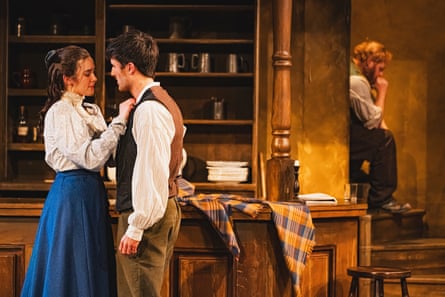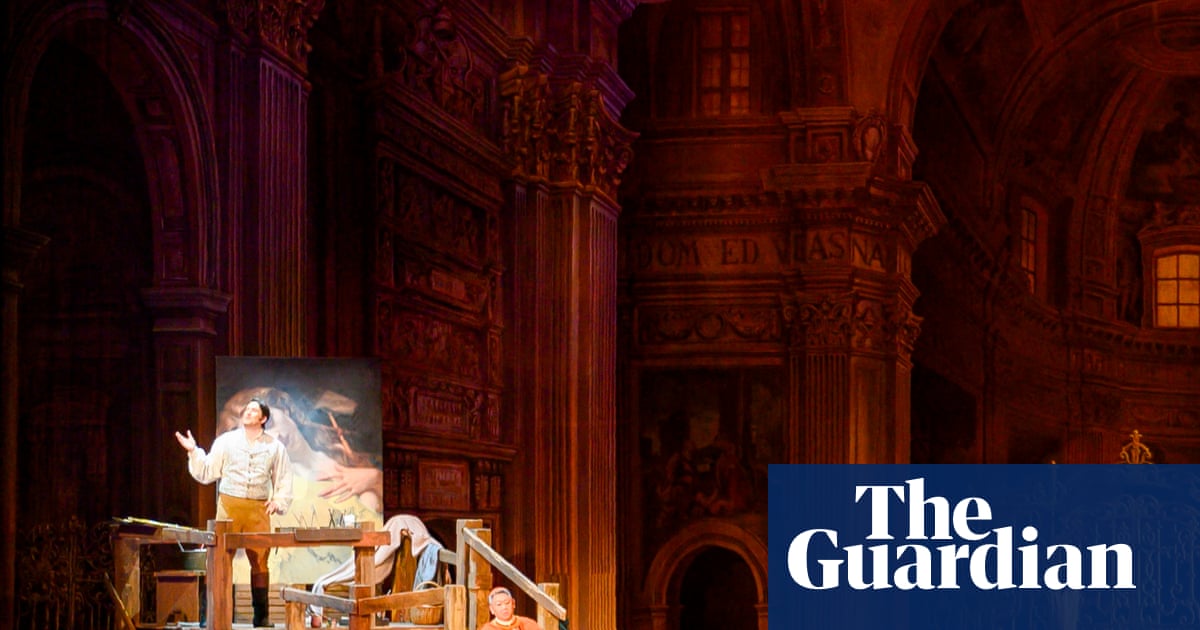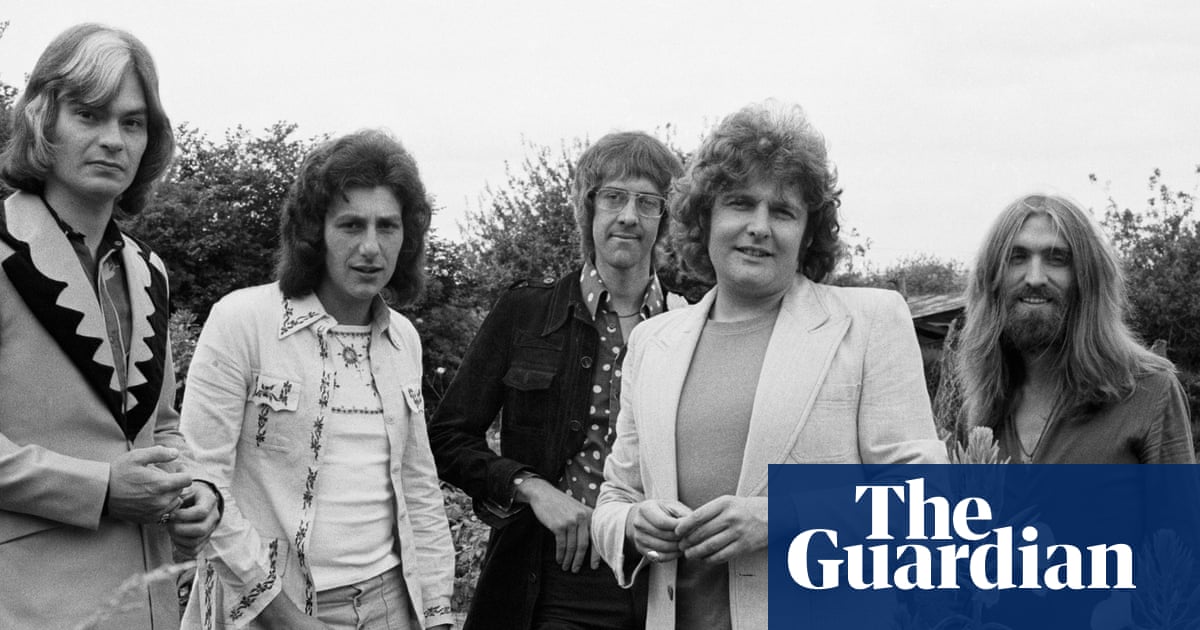John Jones’s life is ripe for dramatisation, full of renegade spirit and derring-do that borders on the fantastical. An outlaw from north Wales with an aptitude for escaping the authorities, he had risen to criminal heights by the time of his death in 1913, variously hailed as the Welsh Houdini, Little Turpin and Coch Bach y Bala (the Little Redhead of Bala).
So it is a shame that this debut by theatre critic turned playwright Chris Ashworth-Bennion feels like a missed opportunity in its enactment of Jones’s myth and its failure to penetrate it. The play begins in a pub where Jones (Simon Holland Roberts) is hiding out after escaping from prison. He is holding drinkers rapt with stories of his “heroic” past and it is clear that he knows how to self-mythologise. But is he speaking the truth? And is he a common criminal or an incendiary force of rebellion?
Because of the tonal uncertainly of this play – a comedy-cum-farce that flips to darkness moments before the end – you do not feel invested enough to be pulled in by these central puzzles.
Jones might have carried shades of Rooster, the charismatic rogue from Jez Butterworth’s Jerusalem, but is too broadly, flatly drawn: a growlingly mischievous figure of fun like a barefoot Falstaff whose motivations are unclear.
Under the direction of Dan Jones, the comedy and characterisation is too generic. Reginald Jones-Bateman (Qasim Mahmood) is the haughty Englishman and tyrant landowner in pursuit of Jones, with a police officer (Rhys ap Trefor) who is so ineffectual that he seems to have arisen out of a saggy 1970s sitcom.

The plot wanders into the outlandish and incredible: Reginald’s party has a gun but fail to apprehend Jones. The police officer is assaulted and beaten after being mistaken for a badger in a sack (why doesn’t he cry out to make them stop?). A giant cauldron is heaved on to the stage by Jones which he says he has carried across the Irish seas (what is the point of that?). Perhaps it is there to feed the blurred lines between reality and myth but instead it seems far-fetched and distracting.
Cross-class and illicit romances are touched on, but seem like cogs to the plot, and intrigues are given away by characters too soon, so that any tension which might have grown is aborted. Poverty and war are mentioned but untethered to the story.
Designer Mark Bailey’s period pub is evocative with its spare wood sparseness. There are rumbles of the approaching Great War as well as friction closer to home. Reginald mentions his time in India as part of the Raj, and there are unspoken parallels to the colonisation of Wales. Like Rooster, Jones is connected to this land which has been “invaded” by English aristocracy. But this theme is diluted by the busy plot and humour.
The tragedy and climactic segue into the realm of myth – is Jones real or the spirit of the native, ancient Prince of Wales? – does not have the impact it should. There is a powerful play about outsider spirit, rebellion and the slippery nature of storytelling within this one, emerging in glimmers.

.png) 3 hours ago
7
3 hours ago
7

















































